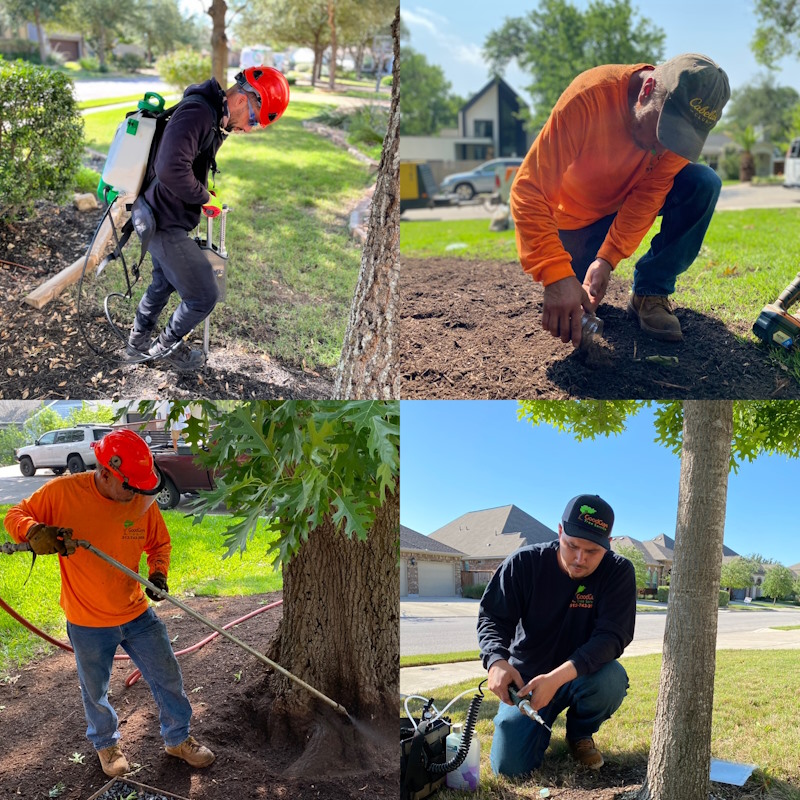Spring has finally arrived. After a long and dreary winter, the sun is shining, the days are getting longer, and the trees and shrubs are finally starting to bloom – hopefully!
After all, we faced one of the worst winters in recent memory, with storms wreaking havoc across the region. Not only did these winter storms take their toll on our homes and families, but our landscapes also faced some of the most extreme conditions imaginable.
Winter Storm Damage
Countless trees and plants were damaged or destroyed during the winter storms, so spring is certainly a welcome sight! It gives the opportunity for the trees to recover from the winter, although we probably need to do our bit to help Mother Nature with the recovery process.
With the right knowledge and understanding, we can help aid the trees in their rehab and recovery, leaving the healthier and more vibrant than ever. Healthier trees are better equipped to deal with subsequent winters, so now is certainly the time to act.
So, if you are homeowner with damaged trees on your property, you have now become an honorary tree doctor!
Damaged trees need some extra love and care to recover, and it is surprisingly easy to do this yourself – we just need you to do a few things and monitor the recovery process – or lack thereof.
Let’s start with the obvious signs of damage on our trees – broken or damaged limbs.
Storms have caused lots of damage to tree limbs, and this is making it difficult for the trees to recover. This because the limbs are where the leaves grow, and these leaves are where the tree draws its energy from the sun.
So, with broken or damage limbs, there is less foliage on the trees, meaning they cannot generate as much energy compared to last year. With less energy, it means a slower recovery process, fewer leaves blooming, and trees being more susceptible to pathogens and insect infestations.
Live Oaks
One species of tree was hit especially bad by the poor winter conditions – our beloved Live Oaks.
Live Oaks get their name for the year round foliage. Leaves remain for the entire year, falling off during each spring when a new bloom appears. However, because the winter was colder than average, ice remained on the leaves for long periods, killing them off earlier than normal.
While many Live Oaks have starting to bloom new leaves, many are struggling to regrow the foliage at a normal rate. Less foliage means less energy to grow and remain healthy.
Worse still, many of these Live Oaks also have damaged branches and limbs from the storms, meaning their ability to grow new leaves is signficantly lowered. In fact, many of these trees have gone upwards of six weeks without any new leaves in spring, greatly impairing their ability to properly feed themselves.
So, now is the time to help along with the recovery process – this goes for all trees, not just Live Oaks!
It is important to monitor your trees over the coming weeks. Look at their overall condition, seeing how many leaves are growing, and whether there are any signs of damage to the limbs. If you own Live Oaks, think about whether their leaves have fallen earlier than usual – if the tree looks bare then its probably the case.
By monitoring their health and condition, you can gauge what you need to do to help them recover. They may just be a few weeks off from blooming again, but they may also need your assistance to help regrow their leaves.
Tree Fertilization
For this reason, we highly recommend investing in tree fertilizer. Our trees need additional nutrients now more than ever, so by adding fertilizer we can encourage faster recovery from the effects of the harsh winter.
With added nutritional boost from fertilizer, the trees will start to regrow their foliage, which in turn means they can gather more energy to health themselves. This also allows the tree to be better prepared for the upcoming year!
You’ll want them in good shape for the summer months, where triple digit temperatures and long periods of drought will put the trees under stress – lots of leaves ensures the tree has enough energy to stay fit and healthy in all conditions!
Moreover, when trees are good in health, they are better at fighting off pathogens and invasive insects, so by fertilizing your trees this spring you give them the best chance to recover and remain in great condition for the weeks and months ahead.
After a long, harsh winter, our trees are weaker than ever, so they need some help from us. With your help, the trees will not just survive – they will thrive!







